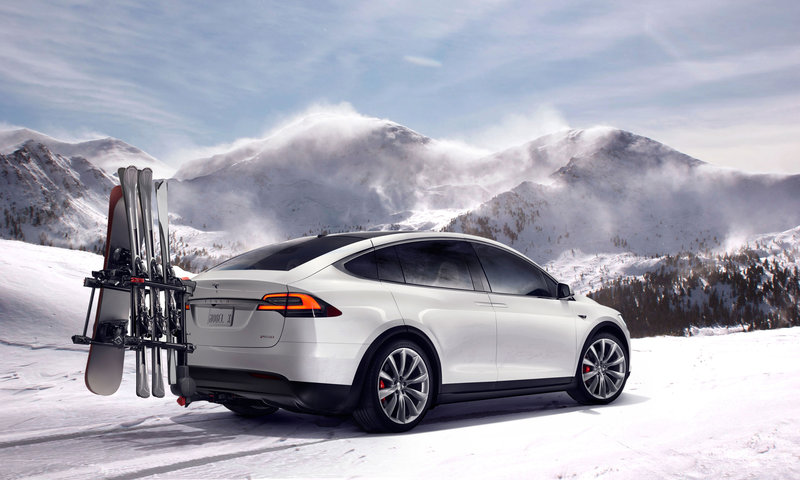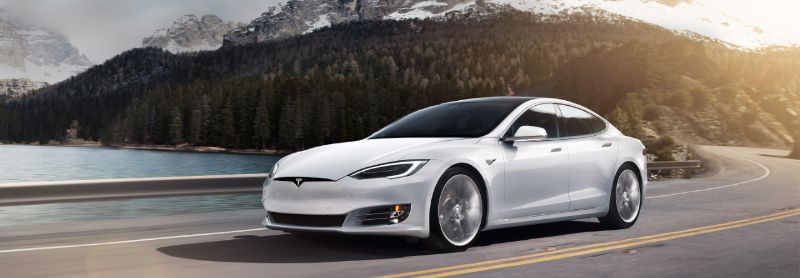#21: 2016 Tesla Model X P100D w/ Ludicrous Speed

Next up on our list is a vehicle that finally managed to harness the wonderful, torque-y electric motor the right way: The 2016 Tesla Model X P100D – with the aptly named “Ludicrous Speed” software update. While it might look like every other boring, curvy crossover, ole’ Musk’s Model X puts most Porsches and Ferraris to shame with its cute, bubbly façade and a 0-60 time of just 2.8 seconds.
Thanks to a certain billionaire entrepreneur’s on-air hash session, the Model X needs little introduction. Let’s break it down anyway. The Model X is Tesla’s current breadwinner, a luxury, all-electric daily driver with an impressive 295-mile range on a single charge. That’s higher than any other electric vehicle not made by Tesla. And the whole thing is no gimmick, either. Consumer Reports found owner satisfaction puts the Model X high on the list.

source: Tesla
But how does such an innocent-looking crossover make so much power? We must go back to 1856, when the O.G. himself, Nikola Tesla, came to be. Tesla is credited with inventing the guts of the Model X over a century ago: The modern induction motor.
Unlike a gasoline engine, feeding less “fuel” to an induction motor automatically means an improvement in mileage. It also means that – you guessed it – the more “fuel” you unleash, the more power you get. And better still, this means that if you mash that pedal you don’t have to wait for that engine’s speed to reach 4, 5, or 6,000 RPM to get hit that sweet spot on the torque curve. Take a quick peek at a Model X’s dyno graph, and you’ll see an almost immediate peak of power.
How much power, exactly? Over 920 lb-ft of torque, to be exact. Imagine having almost as much torque as a Bugatti Veyron on tap at a dead stop. It’s no wonder this cutesy little crossover earns a spot on our list.
#20: 2015 Tesla Model S P85D w/ Ludicrous Speed

If crossovers aren’t your thing but you’d still like to fly down the roads in deafening silence, check out the Tesla Model S P85D – of course, with Ludicrous Speed. Thanks, Musk! Tesla’s Model S is the cooler, sleeker, and more well-equipped brother to the bulbous Model X, and it boasts even greater performance and speed. This fancy four-door luxury sedan beats out the Model X in overall fuel economy, with a total range topping out at 335 miles (best in class, certainly).
Of course, just like the Model X, the Model S pumps out a 0-60 time of just 2.8 seconds and boasts torque that plays in the 900 lb-ft range. But there’s a lot more to making that magic happen than an induction motor, so how does Tesla do it?

To answer the question, we have to also look at how all that torque reaches the wheels. With a combustion engine, the linear motion of the pistons must be transformed into rotational force via the crankshaft. That crankshaft then has to spin a big ole’ flywheel, spins a big ole’ clutch or torque converter, which goes through a bunch of gears, which then hits a driveshaft, some more gears, and more transition of energy. All of that power travel causes parasitic loss, and the natural instability of the combustion engine means that amount of torque can only be safely created at certain engine speeds. Even if a combustion motor made the same torque the P85D does, it wouldn’t perform as well. What gives?
Rather, what doesn’t give? The Model S doesn’t give up any power to parasitic loss and it doesn’t have to wait for engine speed to, well, get up to speed. That induction motor is slapped directly on top of the Model S wheels’ output shafts. The result is a nearly 100% efficient transfer of power at the starting line.





